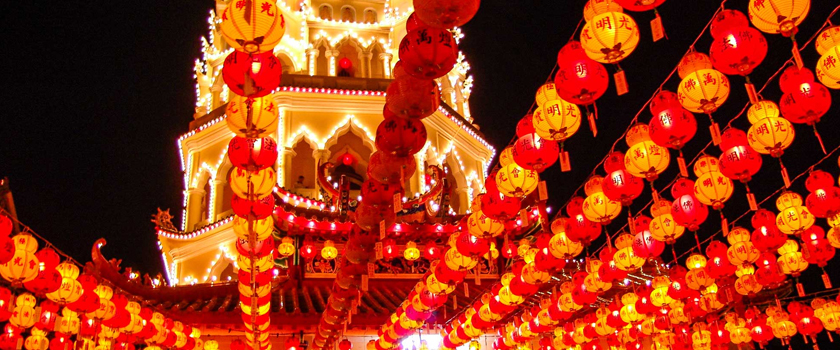Mainland China, Singapore, and Malaysia use simplified characters, while Taiwan, Hong Kong, Macau, and many overseas Chinese communities use traditional characters. Traditional characters are used as the official writing system of Taiwan, Hong Kong, and Macau. Mainland China uses simplified characters, but also produces printed material in traditional characters for use in overseas communities.
Actually, Traditional Chinese is not only used in HK, Taiwan and Macau, but also used in Guangdong Province, China mainland. Cities, like Guangzhou, Shenzhen of Guangdong province still reserve the culture of translational Chinese, since Cantonese is the most popular dialect in Guangdong prov.
Most people can speak Cantonese much better than Mandarin. And as we know written Cantonese is traditional Chinese. So we usually call David Beckham, 碧咸 in Cantonese rather than 贝克汉姆 in mandarin.
Traditional Chinese is especially widely used in scene spots, Chinese restaurants, advertisements, bank names etc. The retronym “traditional Chinese” is used to contrast traditional characters with Simplified Chinese characters, a standardized character set introduced by the government of the People’s Republic of China on Mainland China in the 1950s.
In overseas Chinese communities other than Singapore and Malaysia, traditional characters were most commonly used, although the number of printed materials in simplified characters is growing in Australia, USA and Canada, targeting or created by new arrivals from mainland China.
A large number of overseas Chinese online newspapers allow users to switch between both sets. In contrast, simplified Chinese characters are used in mainland China, Singapore and Malaysia in official publications. The debate on traditional and simplified Chinese characters has been a long-running issue among Chinese communities.
Read Also: Some Easily-misused Chinese Traditional Characters
History of Traditional Characters
Chinese writing dates from about 1400 BC, with the first characters being pictographs representing people, animals and objects. The earliest examples of Chinese writing are inscriptions on bones and tortoise shells. Many of these early pictographs clearly depict the objects they represent. The character for “horse”, for example, shows the mane, head, torso and legs of the animal.
As the written language became more complex, new characters were introduced and existing characters evolved. The so-called pictographs, which were the earliest forms of Chinese writing, became more stylized and less pictorial.
The modern shapes of traditional Chinese characters first appeared with the emergence of the clerical script during the Han Dynasty(207 BC – 220 AD). As its name tells, this is a traditional version that had been written by Chinese people for thousands of years.
And that is why Chinese characters are often called hànzì 漢字(trad) 汉字 (simp), meaning “Han (Dynasty) writing”.
Traditional Characters – Features
As implied by the name “simplified”, traditional characters are more complex than their simplified counterparts. This means that they have more lines and require more pen strokes to draw them.
Take for example the character meaning “horse”. The traditional form is 馬, and the simplified form is 马. The traditional form has 10 strokes and the simplified form has 3 strokes.
Division of traditional Chinese
Due to the political separation and the difference of spoken languages, people in Hong Kong and Macau speak Cantonese, while people in Taiwan speak Mandarin and Taiwanese, written traditional Chinese can be divided into Hong Kong traditional Chinese and Taiwan traditional Chinese. Over the years, translation between HK traditional Chinese and Taiwan traditional Chinese has been complicated by the divergences in language usage between the two communities. Grammatical differences are not generally considered to be major, but there are terminological differences in HK and Taiwan.
There are terminology and expression habits difference between Hong Kong and Taiwan traditional Chinese. Thus, someone come up with the opinion that we should call “台湾用语”、and“香港用语”respectively, rather than call “繁体用语”in whole.
Traditional Chinese translation service in CCJK
As a Hong Kong and China mainland based company, CCJK has around 11 years history in providing translation and localization service. If you need our help on translation or any enquiry, please feel free to contact us. Anytime, anywhere, we can help you out by our standard translation.
Shenzhen
Rm 902, JiaDa Building, No. 5 SongPingShan Road, High-Tech Industrial Park (N),
Nanshan District, Shenzhen 518057 China
Tel:+86-755-8611-7878
Fax:+86-755-8611-7978
Changsha
Rm 1903, Block A, South Tower, 202 Building, No. 882 Wuyi Avenue, Kaifu District, Changsha, Hunan 410005, P. R. China
Tel:+86-731-8386-9978
Fax:+86-731-8273-0725
Take a look at how we helped our client by localizing their project for Chinese language. Click here to read the complete case study









